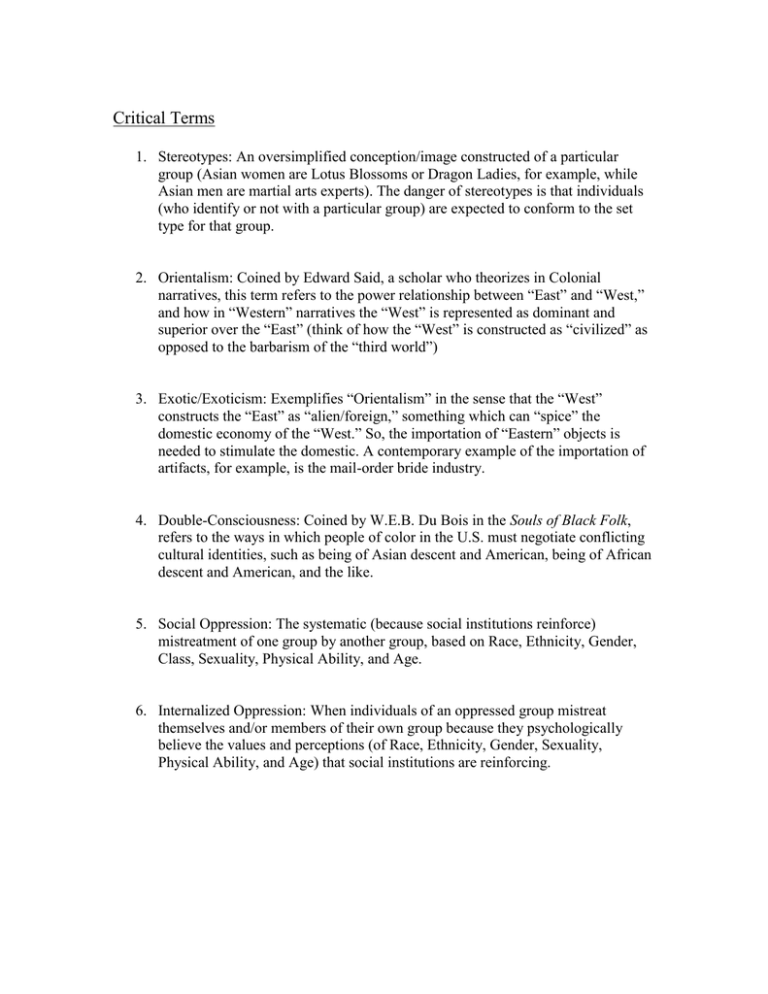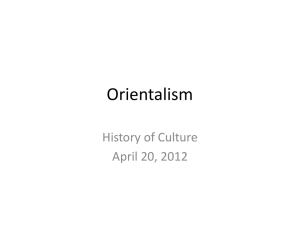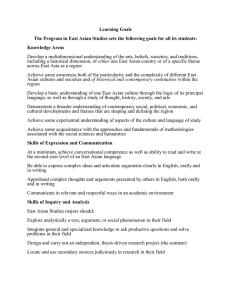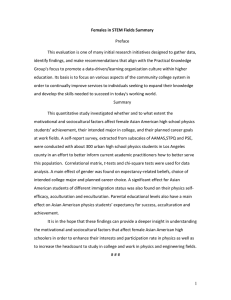Critical Terms
advertisement

Critical Terms 1. Stereotypes: An oversimplified conception/image constructed of a particular group (Asian women are Lotus Blossoms or Dragon Ladies, for example, while Asian men are martial arts experts). The danger of stereotypes is that individuals (who identify or not with a particular group) are expected to conform to the set type for that group. 2. Orientalism: Coined by Edward Said, a scholar who theorizes in Colonial narratives, this term refers to the power relationship between “East” and “West,” and how in “Western” narratives the “West” is represented as dominant and superior over the “East” (think of how the “West” is constructed as “civilized” as opposed to the barbarism of the “third world”) 3. Exotic/Exoticism: Exemplifies “Orientalism” in the sense that the “West” constructs the “East” as “alien/foreign,” something which can “spice” the domestic economy of the “West.” So, the importation of “Eastern” objects is needed to stimulate the domestic. A contemporary example of the importation of artifacts, for example, is the mail-order bride industry. 4. Double-Consciousness: Coined by W.E.B. Du Bois in the Souls of Black Folk, refers to the ways in which people of color in the U.S. must negotiate conflicting cultural identities, such as being of Asian descent and American, being of African descent and American, and the like. 5. Social Oppression: The systematic (because social institutions reinforce) mistreatment of one group by another group, based on Race, Ethnicity, Gender, Class, Sexuality, Physical Ability, and Age. 6. Internalized Oppression: When individuals of an oppressed group mistreat themselves and/or members of their own group because they psychologically believe the values and perceptions (of Race, Ethnicity, Gender, Sexuality, Physical Ability, and Age) that social institutions are reinforcing.





